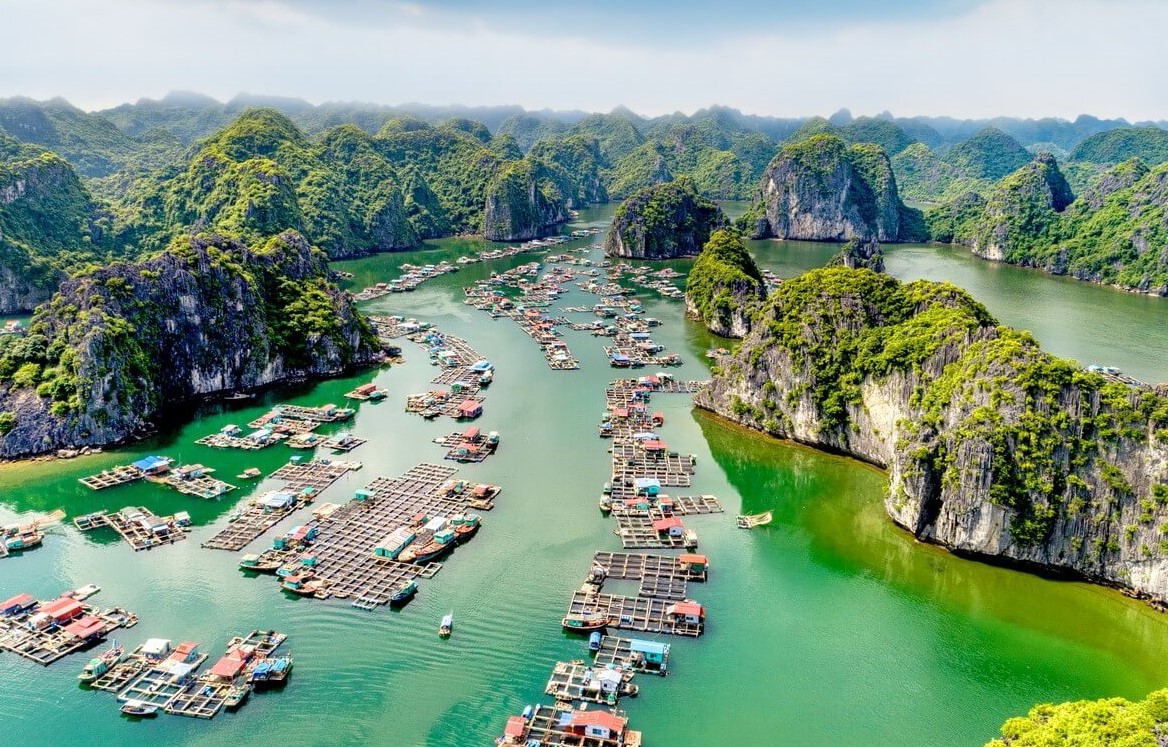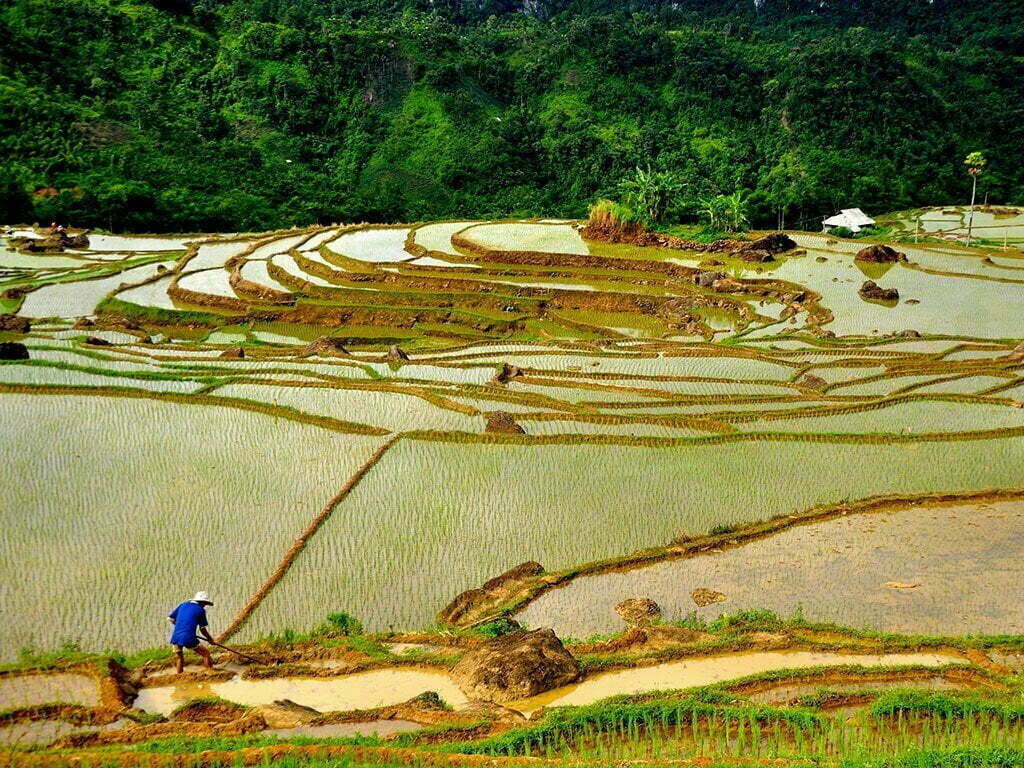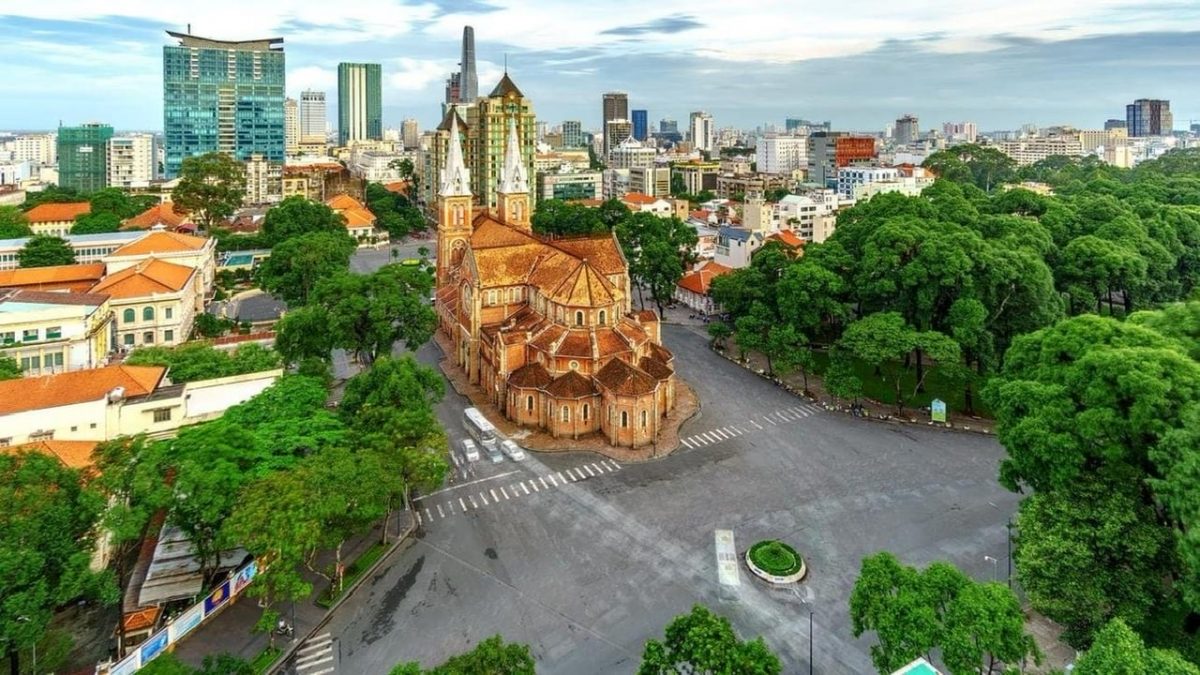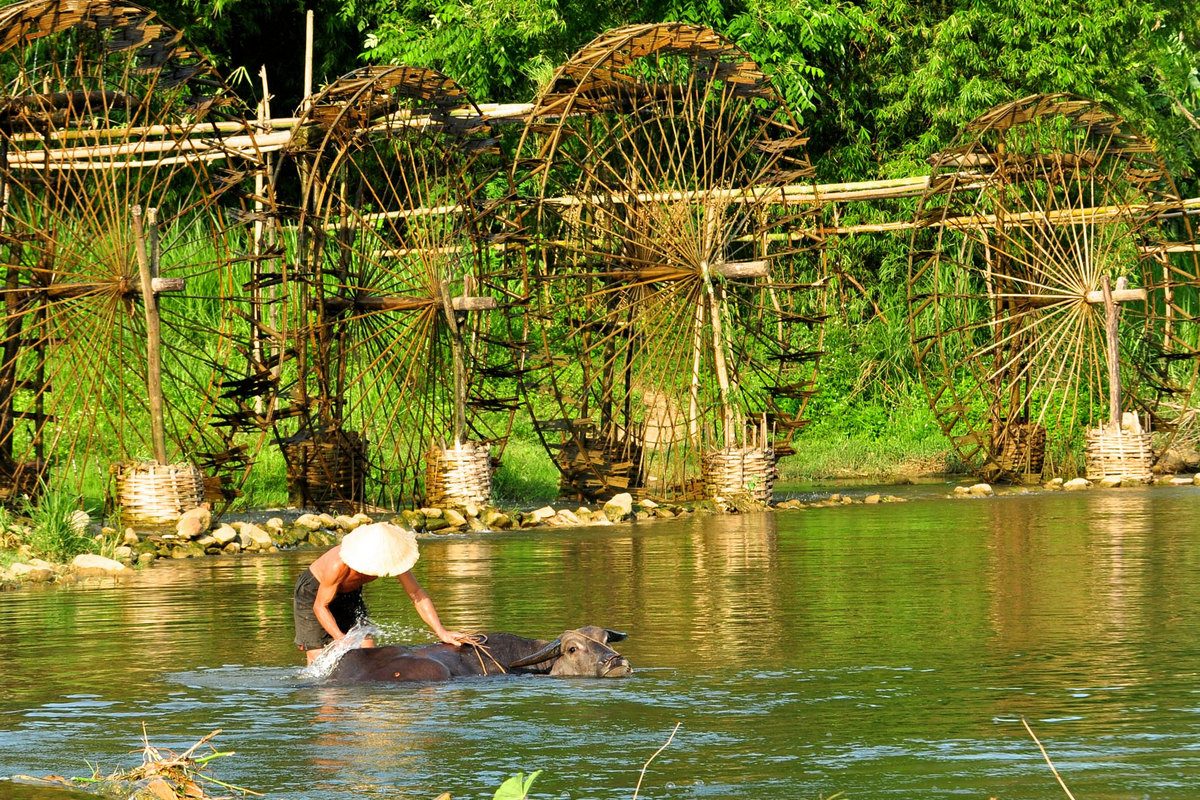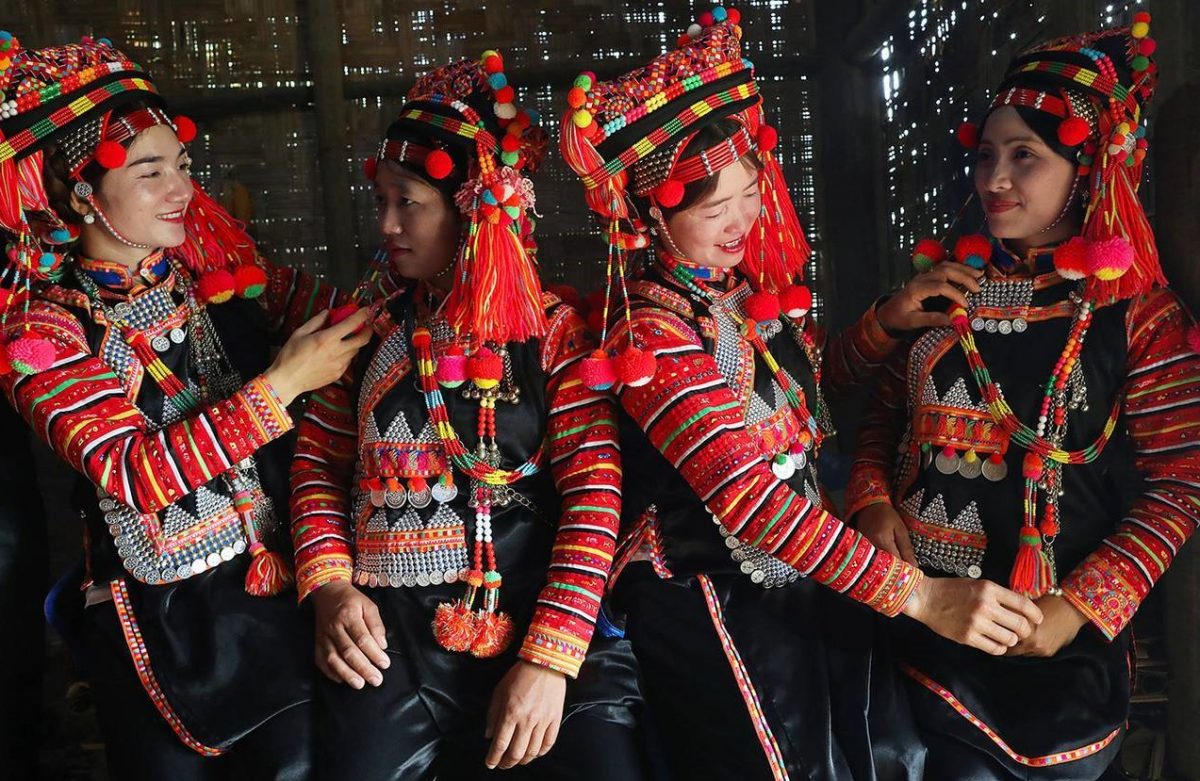Everything you need to know about Ninh Binh
13/04/2024Ninh Binh is a province Nestled in the Red River Delta of Northern Vietnam, approximately 90 kilometers south of Hanoi. It is famed for its stunning natural beauty, rich history, and unique cultural heritage. Vietnam’s first capital was established here, and today the area is a protected UNESCO World Heritage Site, full of mossy pagodas, striking limestone karsts, and surreal landscapes.
If you are planning a trip to the S-shaped country, make sure to include Ninh Binh at the top of your itinerary. Such as
• Cruise on a paddleboat tour in Trang An or Tam Coc
• Go temple trekking at Bich Dong Pagoda
• Stroll through Hoa Lu Ancient Village
• Conquer the top of Hang Mua
• Wander the Bai Dinh Pagoda
• Go for a hike in Cuc Phuong National Park
• Explore the Van Long Wetlands
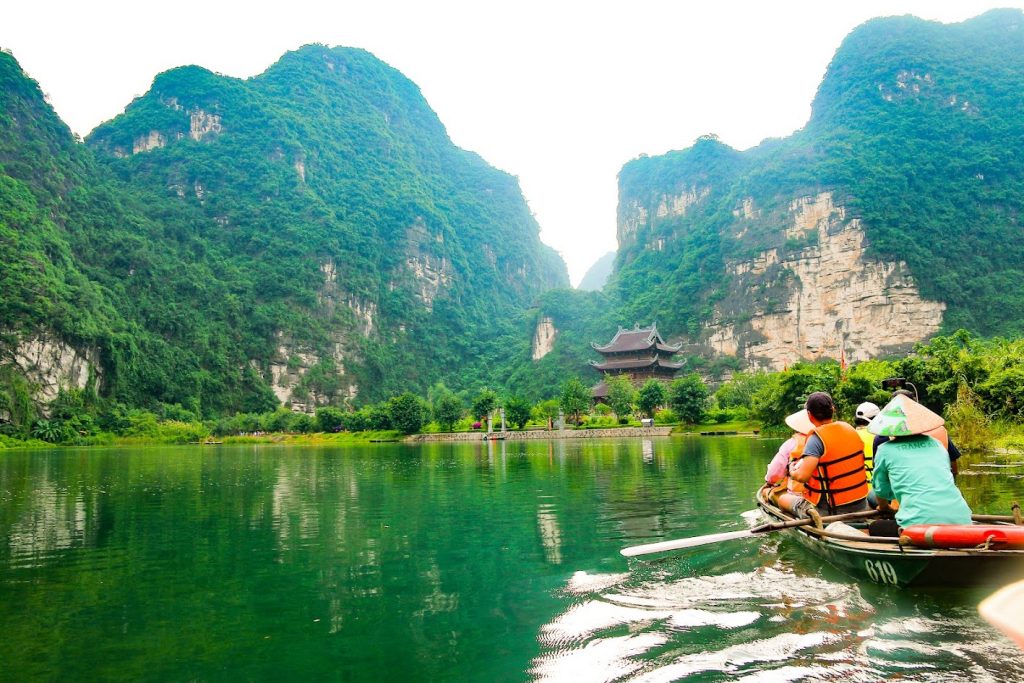
When is the best time to visit Ninh Binh Vietnam?
The weather in Ninh Binh is the humid subtropical climate. The region has distinct seasons, each offering a unique experience for visitors. This wonderful land has four seasons including winter (dry season), summer (rainy season), spring, and autumn as two transition periods. The most beautiful time to visit this place depends on the weather and scenery that you want to see here.
The best time to visit, is during the months of April to June and September to October when the weather is pleasant and rainfall is relatively low.
– From late May to early July which is harvest season in summer, or from September to October, which is also the time for locals to reap the wet rice. You will have a chance to admire the natural beauty of this place. Apart from the harvest season with the beautiful golden paddle fields, another advantage of visiting Ninh Binh in June is that you can see the lotus in Tam Coc – Bich Dong. Once you get here, you can feel the perfume of lotus pervades in the air.
– From September to October: the weather weather is fairly cool, with temperatures ranging from 26 to 31 degrees Celsius. This time of year offers pleasant weather for outdoor activities, such as hiking, cycling, and boat trips. Additionally, the rice harvest season falls during September, providing visitors with a mesmerizing sight of golden rice fields.
– February and March are also great times to visit Ninh Binh for those interested in experiencing local festivals. During these months, Ninh Binh comes alive with vibrant celebrations that showcase the traditions, customs, and spiritual beliefs of the local community.
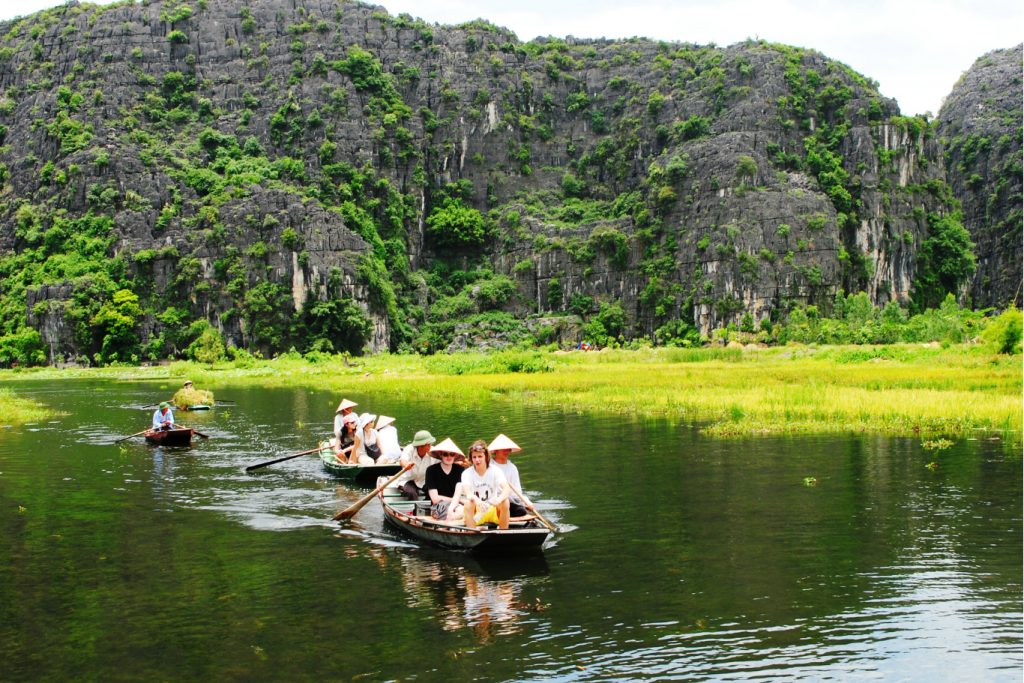
08 Must do activities in Ninh Binh
*** 01. Cruise on a paddleboat tour in Trang An Landscape Complex
Trang An landscape Complex was included into the list of UNESCO World Heritage Sites in Vietnam in 2014 both for its cultural and natural value. It is often called as the “Inland Ha Long Bay”. It is a spectacular landscape of limestone karst peaks permeated with valleys, many of them partly submerged and surrounded by steep, almost vertical cliffs. Exploration of caves at different altitudes has revealed archaeological traces of human activity over a continuous period of more than 30,000 years. There are also small villages, temples, ride paddy fields, and pagodas within the area.
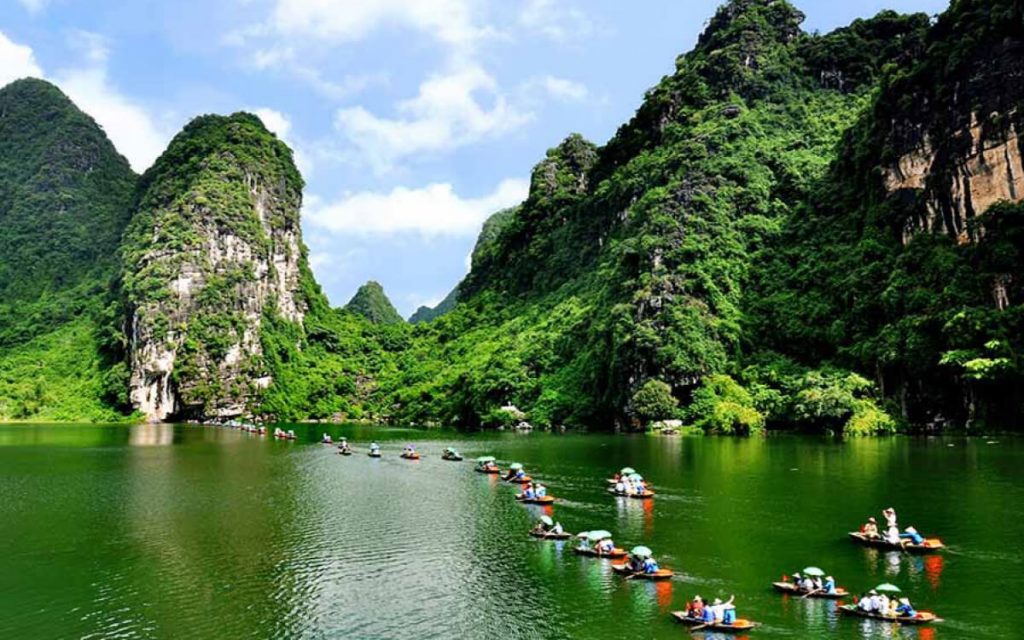
*** 02. Boat trip in Tam Coc
Tam Coc – Bich Dong tourist area is located in Hoa Lu District, approximately 7 kilometers from the city center of Ninh Binh. Tam coc renowned for its karst mountains, which rise majestically from the surrounding rice fields.
A Tam Coc boat tour Ninh Binh offers a delightful journey through picturesque landscapes, breathtaking scenery, where you will glide along the Ngo Dong River and explore enchanting caves. This boat tour offers an opportunity to admire the natural beauty of mountains and rivers, witness the peaceful life of riverside residents, cultural heritage, tranquility and explore historical sites related to Vietnam’s struggle for independence.
The end of May and the beginning of June is the most vibrant time to visit Tam Coc. This is the harvest season, when the rice fields transform from vibrant green to golden yellow, filling the entire landscape with a stunning hue. The incredible scenery provides a breathtaking backdrop for your visit.
January and February: you can admire the lush green rice fields that stretch like soft silk.
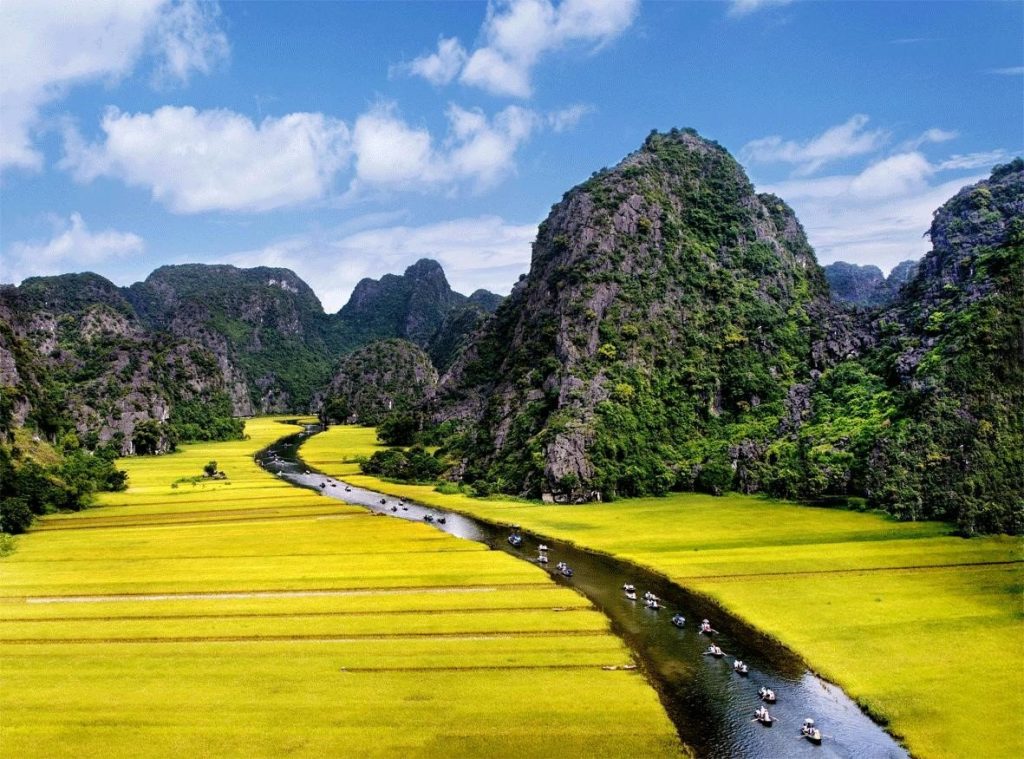
*** 03. Go temple trekking at Bich Dong Pagoda
Bich Dong Pagoda is nestled in Ngu Nhac Mountain, Ninh Hai Commune, Hoa Lu District, Ninh Binh Province. Originally constructed in 1428 during the reign of Emperor Ly Thai To, Bich Dong Pagoda used to be a small pagoda nestled in Ngu Nhac Mountain. It takes about 10 minutes by car from Tam Coc.
Bich Dong Pagoda renowned as a timeless cultural and historical relic in Vietnam. Bich Dong Pagoda is a striking religious landmark in a sacred land. Coming to this pagoda, you have a chance to enjoy the peaceful atmosphere, and learn more about Buddhism in Vietnam.
Bich Dong Pagoda is located on a mountain, consists of three levels: Lower Pagoda (Ha Pagoda) , Middle Pagoda (Trung Pagoda), Upper Pagoda (Thuong Pagoda), Dark Cave Bich Dong, Xuyen Thuy Cave. Each of the three pagodas has a roof with four upwardly curved corners, resembling the feathers of a phoenix’s tail.
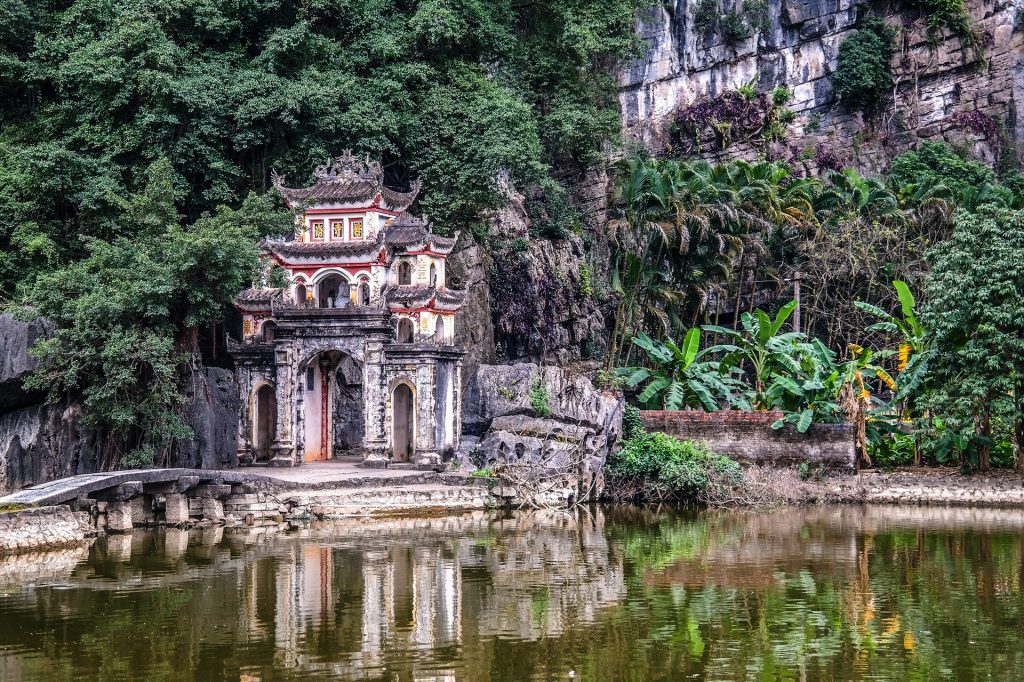
*** 4. Stroll through Hoa Lu Ancient Capital
Hoa Lu Ancient Capital is as the first capital of Vietnam, not only a valuable relic site but also a remarkable tourist attraction, offering tourists the chance to appreciate both stunning historical scenery and unique architectural values of a by gone era.
Hoa Lu Ancient Capital is famous for its rich architectural and historical landmarks. In 968, King Dinh Bo Linh of Dai Co Viet (an ancient name of Vietnam) constructed his capital in Hoa Lu and ruled until 980.
Afterward, Hoa Lu also endured for almost 31 years through the Le dynasty (980–1009) and the Ly dynasty (1009–1010). In 1010, King Ly Thai To moved his capital to Thang Long (Ha Noi now), and Hoa Lu became an old capital with many preserved historic temples and relic locations in Vietnam.
Nowadays, Hoa Lu ancient capital plays an important role in architectural and historical complex of Viet Nam. It was also recognized as one of the 4 cores forming of the UNESCO World Heritage Site – Trang An Complex.
Coming to Hoa Lu Ancient Capital, you will have a chance to visit Temple of King Dinh Tien Hoang, Temple of King Le Dai Hanh, Nhat Tru Pagoda, Hoa Lu Tu Tran.
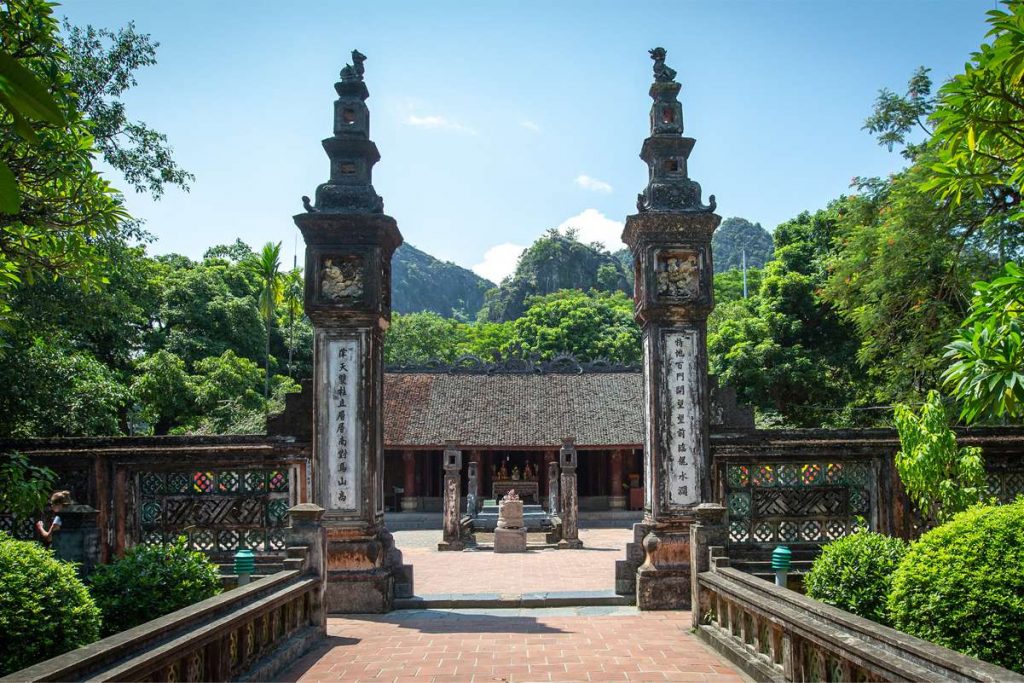
*** 5. Conquer the top of Mua Cave
Mua cave is located inside Ngoa Long Mountain in Khe Dau Ha village, Ninh Xuan commune, Hoa Lu district. Together with Trang An ecological tourism complex, is 3km from North of Tam coc.
After climbing 500 stone steps to the scenic overlook a top Ngoa Long Mountain, travelers will be rewarded with a stunning panorama of Ngo Dong River and the paddy fields below. To add to the incredible 360-degree view, there are a few worship sites along the ascent, offering visitors a glimpse into Vietnam’s long-standing legacy of Buddhism.
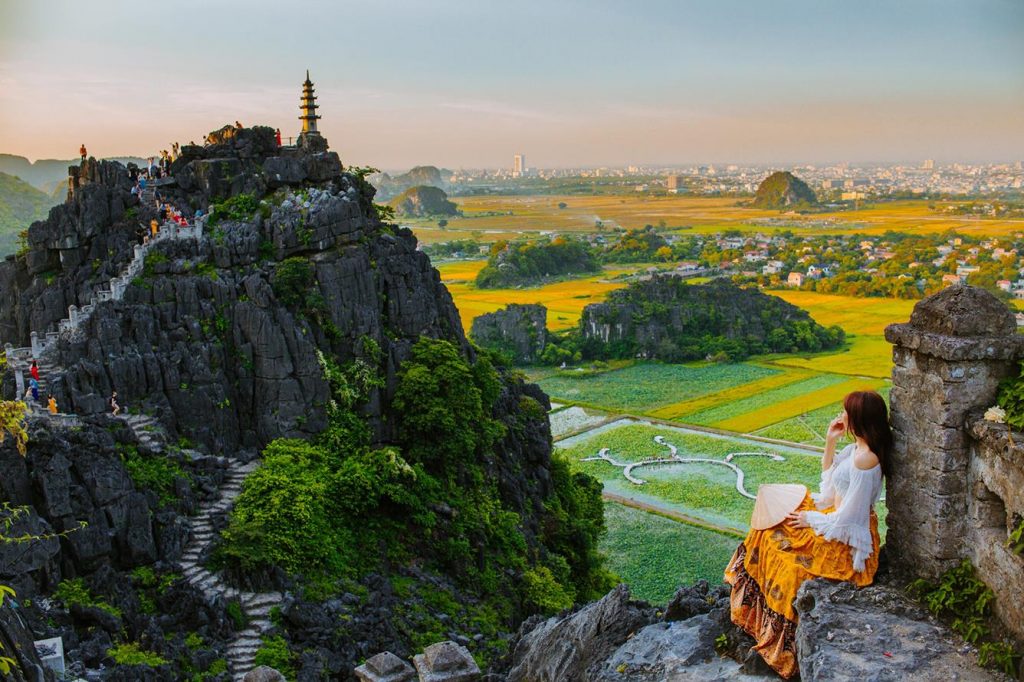
*** 6. Go for a hike in Cuc Phuong National Park
Cuc Phuong National Park Located only 120km southwest of Hanoi and nestled between the provinces of Ninh Binh, Hoa Binh and Thanh Hoa, Cuc Phuong boasts engaging cultural and wildlife heritage and enchanting scenery. Magnificent limestone mountains rise up majestically from the green rice-terraces and traditional stilt houses of the Muong hill-tribe. Covered in a dense forest they form a habitat for some of Asia’s rarest species. It is no wonder that researchers, naturalists, enthusiasts and conservationists alike are drawn to this corner of the world. Cuc Phuong National Park in northern Vietnam has been honored as Asia’s Leading National Park for the fifth consecutive year.
Being the country’s largest and first national park, Cuc Phuong consists of dense forest of millennia-old trees, botanical gardens, a wide range of birds, mammals, reptiles and colorful butterflies along with two animal sanctuaries which are worth exploring.
The forests of the park also provide living sources for local communities. In earlier times, Cuc Phuong was home to the Muong minority people and to this day a few scattered villages around the park’s periphery. Locals take part in community-based ecotourism and provide homestay to attract tourists stay longer in the park, and create incentives to support conservation programs.
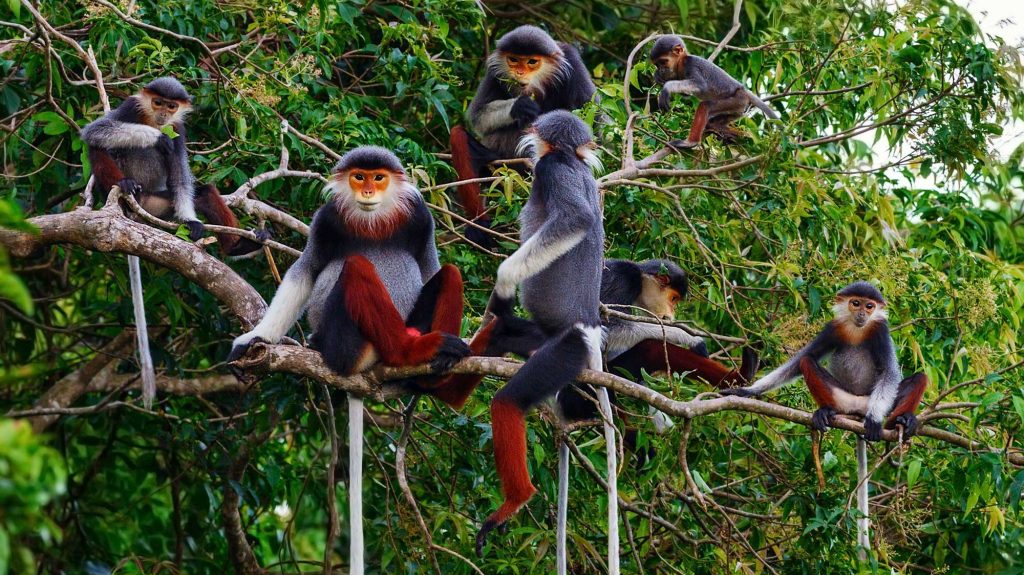
*** Best time to visit Cuc Phuong National Park
Cuc Phuong National Park is tropical monsoon. The average temperature at 24.70C annually. It’s suitable for visitors to explore the park in almost time of the year. The rainy season from July to September. In rainy days, trekking trails are very slippery and some sites are closed to ensure the safety for tourists.
– The months February to April are the best time for bird watching. When they can see many kinds of rare birds like: pheasant, coriander, marble babbler, chopped white belly.
– Late April – to early May the tourists come to Cuc Phuong National Park to hunt for stunning photos with thousands of colorful butterflies, which creates the most romantic scenery ever and visitors can feel being lost in the wonderland.
Coming to Cuc Phuong National Park, you can do trekking & cycling in the primary forests. Wildlife discovering and bird watching and visit conservation centers
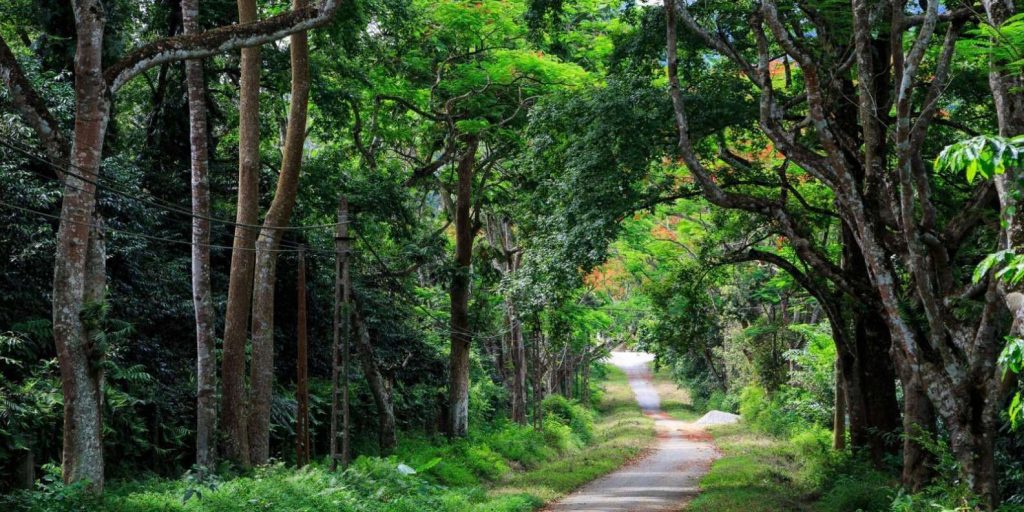
*** 7. Explore the Van Long Wetland Nature Reserve
Van Long Nature Reserve is situated in Gia Van commune, Gia Vien district, Ninh Binh province, is around 80 kilometers away from Hanoi capital city. It is a stunningly beautiful example of Vietnam’s wilderness, offering visitors a chance to immerse themselves in nature and escape from the hustle and bustle of everyday life. The reserve is home to a wide range of flora and fauna and has plenty of activities for visitors to engage in.
Take a boat ride on Van Long Lake offers a unique opportunity to immerse yourself in the natural beauty of Vietnam. As you boat along the calm waters, relax and unwind as you listen to the gentle sounds of the water and feel the cool breeze on your face.
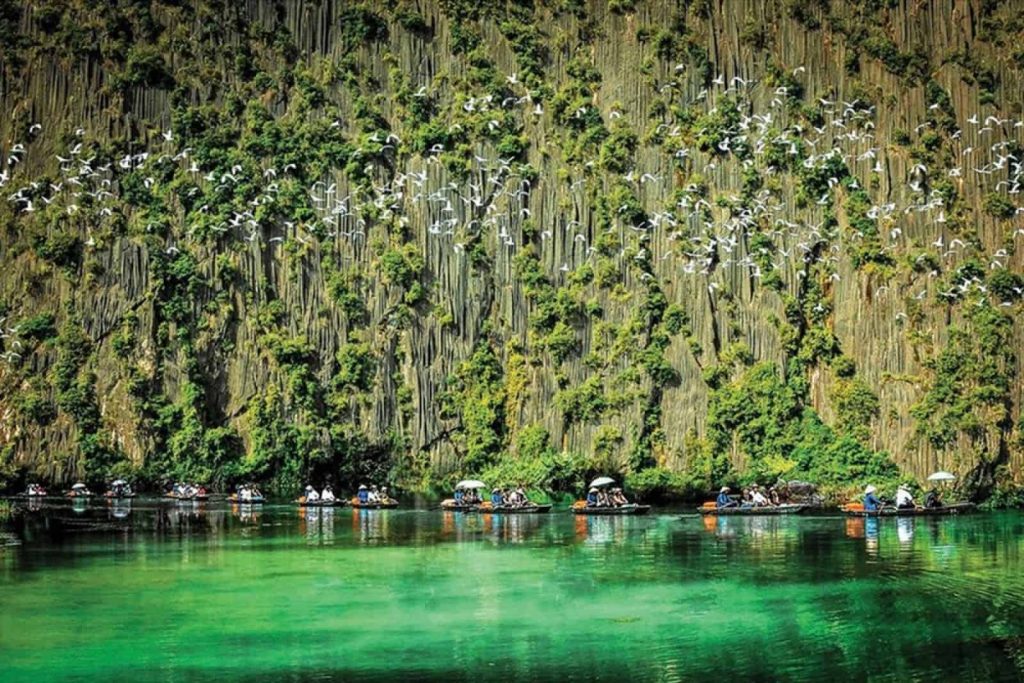
How to get Ninh Binh from Hanoi?
Ninh Binh city is a small city in the Read River Delta. It is located in northern Vietnam . It takes 2 hours by van from Hanoi center to Ninh Binh. Nowaday Ninh Binh has a developed traffic systems. The travelers are easy to get there. Most of the vehicles to Ninh Binh are totally safe and guaranteed to reach there. We would like to introduce some way to visit Ninh Binh.
1. Take a Private car from Hanoi to Ninh binh
It is easy to take a taxi directly to Ninh Binh or you can rent a private car from Travel agency. The drivers cannot speak English but they can drop you any places there as your requirement. With this way, it is quickest to get Ninh Binh but a little bit expensive.
2. Take train from Hanoi to Ninh Binh – The cheapestway
If you have time and want to exploring real Vietnam. You can get option of take a train. The train from Hanoi to Ho Chi Minh City stops at Ninh Binh. There are frequent trains depart from Hanoi everyday. But you need to go to Railway station and then you can buy the ticket or you can book ticket only. It is very easy. We would advice you take a train in morning or late evening.
3. Take a limousine bus
bus or mini van (limousine) are public to Ninh Binh every hour. But you have to go to Giap Bat Station (around 6km from Hanoi central) where you will buy the ticket. The price is cheap and easy to buy (Please remember they except only Vietnam Dong. You can not use US Dollars or Credit Card). The drivers don’t speak English.
If you take mini van or limousine are more better which depart from Hanoi Old Quarter. The driver can speak and understand a little bit English. The price is reasonable but more comfortable than shuttle bus from Giap Bat Station.
4. Take a motorbike (Not advice)
If you prefer to experience highway by motorbike.You have make sure that you are skillful and have experience driving in Vietnam. If not it is dangerous for you. By this way, you have to rent a good mobobike from Tour Operator in Hanoi Old Quarter.
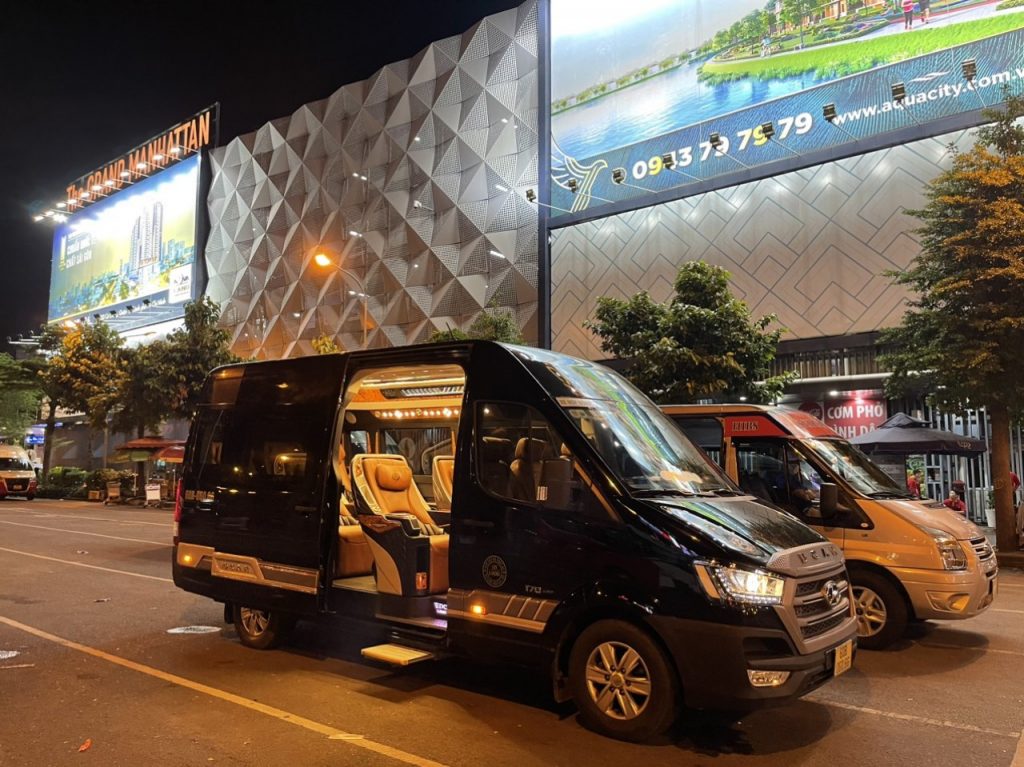
If you prefer to enjoy a tour packages to Ninh Binh from Hanoi. You can book tour with us who will take care everything from start to the end. You just set and experience by yourself.

